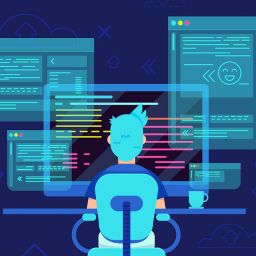
Fraud Prevention in Mobile Banking
Mobile banking, with its simplicity of use and flexibility, is causing a revolution in the availability of new ways for people to access their accounts. Consumers can access and manage their accounts from nearly any device that has an internet connection, allowing them to deposit cash, pay bills, move monies across accounts, and even send money to people or businesses all over the world.
Unfortunately, this change in accessibility and ease is opening up new opportunities for fraudsters aiming to exploit loopholes to steal money from business and consumer accounts. As banks open up more ways for people to conveniently access their money, the chance that those very channels will be used by fraudsters increases.
Consumers and financial institutions alike want realistic solutions for fraud protection. It is critical to apply core tactical methods that can provide the best defense from the start. Here are six mobile banking fraud detection/prevention measures.
1. Multi-factor authentication
Implementing a robust multi-factor authentication system during account registration is one of the simplest and most effective measures. A good multi-factor authentication approach that incorporates things like out-of-band authentication is a key first step toward mobile banking safety.
Multi-factor authentication (MFA) is a security process that requires users to provide more than one method of authentication to access a system or application. In addition to a password, a user may be required to provide a code generated by a security token, a fingerprint or face scan, or a one-time code sent to their phone or email. By requiring multiple forms of authentication, MFA provides an extra layer of security that makes it more difficult for unauthorized individuals to gain access to sensitive information or accounts. MFA is becoming increasingly important as cyber threats continue to evolve and become more sophisticated, and it is often used in conjunction with other security measures such as firewalls and intrusion detection systems.
Multi-factor authentication (MFA) is commonly used in mobile banking applications to prevent frauds and protect sensitive financial information. Mobile banking apps often require users to enter their login credentials (username and password) to access their accounts, but they may also require additional authentication factors to ensure that the user is authorized to access the account.
Some common MFA methods used in mobile banking include:
One-time passwords (OTPs): These are temporary codes that are sent to the user’s mobile phone or email address. The user must enter the OTP in addition to their login credentials to access their account.
Biometric authentication: This includes methods such as fingerprint scanning or facial recognition. Users must provide a biometric identifier in addition to their login credentials to access their account.
Security tokens: These are small physical devices that generate a unique code that the user must enter to access their account.
By requiring multiple forms of authentication, MFA helps to prevent frauds and protect users’ financial information from unauthorized access. Mobile banking apps may also use additional security measures, such as encryption and monitoring for suspicious activity, to further enhance the security of the app and prevent frauds.
2. Consumer email and text alerts
Consumer email and text alerts are another effective way to prevent frauds in mobile banking. Email and text alerts can be set up by the user to receive notifications when certain types of transactions occur, such as:
Large transactions: Users can set up alerts to receive notifications when a transaction exceeds a certain dollar amount.
Out-of-state transactions: Users can set up alerts to receive notifications when a transaction occurs outside of their usual geographic location.
Suspicious activity: Users can set up alerts to receive notifications when a transaction appears to be suspicious or unusual.
These alerts can help users identify and respond to potential frauds more quickly, which can limit the damage and prevent further unauthorized activity. Additionally, email and text alerts can be used to remind users to monitor their account activity regularly and report any suspicious activity to the bank.
It’s important for users to set up alerts that are appropriate for their needs and to regularly review and update their alert preferences as necessary. Banks and mobile banking providers should also educate users on the importance of setting up alerts and provide clear instructions on how to do so.
3. Online activity logging and behavioral analysis
Online activity logging and behavioral analysis are powerful tools that can be used in mobile banking to prevent frauds. By monitoring a user’s behavior patterns and activity history, banks and mobile banking providers can identify suspicious activity and potential frauds in real-time.
Online activity logging involves capturing and storing information about a user’s mobile banking activity, including logins, transactions, and other interactions with the app. This information can then be analyzed to identify patterns and anomalies that may indicate fraudulent activity.
Behavioral analysis uses machine learning algorithms to analyze a user’s behavior patterns and create a unique profile of their typical activity. This profile can then be used to identify deviations from normal behavior, which may indicate fraudulent activity.
Together, online activity logging and behavioral analysis can help banks and mobile banking providers detect and prevent frauds by identifying suspicious activity and alerting the user or the bank’s fraud prevention team.
4. Multi-channel fraud and suspicious activity monitoring
Multi-channel fraud and suspicious activity monitoring are critical components of a comprehensive fraud prevention strategy in mobile banking. By monitoring activity across multiple channels, such as mobile devices, online banking, and ATMs, banks and mobile banking providers can detect and prevent frauds more effectively.
Multi-channel fraud monitoring involves analyzing activity across multiple channels to identify patterns and anomalies that may indicate fraudulent activity. For example, if a user’s mobile banking activity suddenly increases while their online banking activity decreases, this may be a sign of fraudulent activity.
Suspicious activity monitoring involves setting up alerts and notifications for unusual activity, such as large transactions or activity outside of a user’s typical geographic location. These alerts can be sent to the user or the bank’s fraud prevention team for further investigation.
By combining multi-channel fraud monitoring and suspicious activity monitoring, banks and mobile banking providers can detect and prevent frauds more effectively and quickly. It’s important for banks and mobile banking providers to invest in advanced fraud detection technologies and to regularly review and update their monitoring practices to stay ahead of emerging fraud threats. Additionally, users should be educated on the importance of monitoring their accounts regularly and reporting any suspicious activity to the bank.
5. Regular monitoring and cleaning of malware
Regular monitoring and cleaning of malware is an important component of mobile banking security. Malware, which includes viruses, worms, Trojans, and other malicious software, can be used by cybercriminals to steal sensitive information, including login credentials, financial data, and other personal information.
To prevent malware from compromising mobile banking security, banks and mobile banking providers should implement regular malware monitoring and cleaning practices. This may include:
Regular system scans: Banks and mobile banking providers should perform regular scans of their systems to detect and remove malware.
Anti-malware software: Banks and mobile banking providers should use up-to-date anti-malware software to prevent malware from infecting their systems.
User education: Banks and mobile banking providers should educate their users on how to prevent malware infections, such as avoiding suspicious links and downloads, keeping their devices up-to-date with the latest security patches, and using strong passwords.
Two-factor authentication: Banks and mobile banking providers should require two-factor authentication, such as SMS-based authentication, to prevent unauthorized access even if a user’s credentials are compromised by malware.
6. Using secure access through HTTPS
Using secure access through HTTPS is a critical component of mobile banking security that can help prevent frauds. HTTPS is a protocol for secure communication over the internet, which encrypts data and provides authentication and integrity guarantees.
When a user accesses a mobile banking app via HTTPS, all data transmitted between the user’s device and the server is encrypted, making it more difficult for hackers to intercept or steal sensitive information, such as login credentials or financial data. Additionally, HTTPS provides authentication, ensuring that users are communicating with the genuine bank or mobile banking provider’s server and not a fake site designed to steal information.
To ensure secure access through HTTPS in mobile banking, banks and mobile banking providers should:
Implement HTTPS encryption: All communications between the user’s device and the server should be encrypted using HTTPS.
Use strong encryption standards: Banks and mobile banking providers should use the latest and most secure encryption standards, such as TLS 1.3, to ensure maximum protection against attacks.
Obtain valid SSL/TLS certificates: SSL/TLS certificates provide authentication that the user is communicating with the genuine bank or mobile banking provider’s server. Valid certificates should be obtained and regularly renewed.
Use HTTP Strict Transport Security (HSTS): HSTS is a security feature that enforces HTTPS communication and prevents attackers from downgrading the connection to unencrypted HTTP.
By using secure access through HTTPS, banks and mobile banking providers can prevent frauds and ensure the safety and security of their users’ sensitive information. Additionally, users should be educated on the importance of only accessing mobile banking apps via HTTPS to protect their information.
7. Continuous vigilance
- Regular security assessments: Banks and mobile banking providers should conduct regular security assessments to identify vulnerabilities and implement necessary patches and updates.
- Monitoring of user activity: Banks and mobile banking providers should monitor user activity for signs of suspicious behavior or transactions, including activity patterns and transaction sizes.
- Automated fraud detection systems: Banks and mobile banking providers should implement automated fraud detection systems that can identify potential frauds in real-time.
- Multi-factor authentication: Multi-factor authentication, such as SMS-based authentication or biometric authentication, can help prevent unauthorized access even if a user’s credentials are compromised.
- Regular training and education: Banks and mobile banking providers should provide regular training and education to their users on best practices for mobile banking security.
Related Posts

The cybersecurity process entails ongoing monitoring and updating in response to the evolving threat environment. Below are some reasons why continuous cybersecurity monitoring is necessary, as well as the advantages of doing so.

In this blog, we’ll show you how to improve your cybersecurity posture quickly and effectively to defend your company from ever-changing cyberthreats.

Phishing, Vishing and Smishing: What’s the Difference? To the untrained eye, these words may appear to be gibberish, but they…

Black Box Penetration Testing: Is It Right for My Business? Penetration testing is a popular approach for businesses to determine…

According to Continuity, the average enterprise storage and backup device contains 14 vulnerabilities, three of which are high or critical risk and might result in a large compromise if exploited.

According to Sophos, the cybersecurity industry can use GPT-3 (chatgpt) as a co-pilot to help combat attackers.

Age verification guarantees that a user is legally old enough to view particular online content, preventing children from viewing explicit content.

What is Vishing and and How to Stop it Happening to You Voice phishing, often known as vishing, is not…

5 Types of Penetration Testing Examined Pen testing, or penetration testing as it is more generally called, can be difficult….

According to IDC, global spending on it security products and services is expected to reach $219 billion in 2023, a 12.1% rise from 2022.

What is Network Penetration Testing and How Can it Help My Business? Penetration tests have grown in popularity as a…

Securing the Metaverse: The Risks and Repercussions If you haven’t heard of the Metaverse, you’ve most likely been living under…

The Best Tips for Password Management in 2023 Do you have a habit of using the same password for everything?…

Keeping Your Small Business Safe From Fake Email Scams Fake email scams frequently target small businesses, so it’s critical to…

In this article, we’ll look at what shoulder surfing is, how it affects cyber security, and, most importantly, how you to protect yourself from such attacks.


